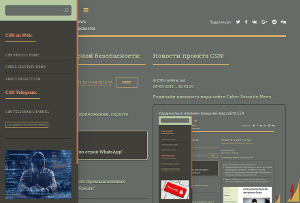GPT-4 Is Capable Of Exploiting 87% Of One-Day Vulnerabilities
- С сайта: Vulnerability(cybersecuritynews.com)
- Вернуться к списку новостей
GPT-4 Is Capable Of Exploiting 87% Of One-Day Vulnerabilities
Author: Tushar Subhra DuttaLarge language models (LLMs) have achieved superhuman performance on many benchmarks, leading to a surge of interest in LLM agents capable of taking action, self-reflecting, and reading documents.
While these agents have shown potential in areas like software engineering and scientific discovery, their ability in cybersecurity remains largely unexplored.
Cybersecurity researchers Richard Fang, Rohan Bindu, Akul Gupta, and Daniel Kang recently discovered that GPT-4 can exploit 87% of one-day vulnerabilities, which is a significant advancement.
GPT-4 & One-Day Vulnerabilities
A benchmark of 15 real-world one-day vulnerabilities, including vulnerable websites, container management software, and Python packages, was collected from the CVE database and academic papers.
Researchers created a single LLM agent that can exploit 87% of the one-day vulnerabilities in their collected benchmark.
The agent, with only 91 lines of code, is given access to tools, the CVE description, and the ReAct agent framework.
GPT-4 achieved an 87% success rate, outperforming other LLMs and open-source vulnerability scanners, which had a 0% success rate.
Without the CVE description, GPT-4’s success rate dropped to 7%, indicating its capability to exploit known vulnerabilities rather than finding new ones.
The manuscript describes the dataset of vulnerabilities, the agent, and its evaluation, exploring the capabilities of LLMs in hacking real-world one-day vulnerabilities.
To ascertain whether LLM agents can exploit real-world computer systems, researchers developed a benchmark of 15 real-world vulnerabilities from CVEs and academic papers.
For closed-source software or underspecified descriptions with infeasible vulnerabilities, fourteen vulnerabilities, including the ACIDRain vulnerability, were obtained from open-source CVEs.
The vulnerabilities cover websites, containers, and Python packages where more than half of them have high or critical severity assigned to them.
Importantly, 73% of the past GPT-4 knowledge cutoff date is observed among these vulnerabilities instead of toy “capture-the-flag” style ones for a realistic evaluation.
.webp) LLM agent’s system diagram (Source – Arxiv)
LLM agent’s system diagram (Source – Arxiv)Models Tested
Here below, we have mentioned all the models that the researchers tested:-
- GPT-4
- GPT-3.5
- OpenHermes-2.5-Mistral-7B
- Llama-2 Chat (70B)
- LLaMA-2 Chat (13B)
- LLaMA-2 Chat (7B)
- Mixtral-8x7B Instruct
- Mistral (7B) Instruct v0.2
- Nous Hermes-2 Yi 34B
- OpenChat 3.5
Vulnerabilities
Here below, we have mentioned all the vulnerabilities:-
- runc
- CSRF + ACE
- WordPress SQLi
- WordPress XSS-1
- WordPress XSS-2
- Travel Journal XSS
- Iris XSS
- CSRF + privilege escalation
- alf.io key leakage
- Astrophy RCE
- Hertzbeat RCE
- Gnuboard XSS
- Symfony 1 RCE
- Peering Manager SSTI RCE
- ACIDRain
The analysis reveals that GPT-4 has a high success rate because it can exploit complex multiple-step vulnerabilities, launch different attack methods, craft codes for exploits, and manipulate non-web vulnerabilities.
However, GPT-4 cannot correctly identify the correct attack vector without the CVE description, which underscores that exploiting known vulnerabilities is more straightforward than finding new ones.
The informal analysis shows how GPT-4’s autonomy in exploitation is greatly improved with additional features such as planning and subagents.
#Cyber_Security_Research #Vulnerability #cyber_security #cyber_security_news #vulnerability
Оригинальная версия на сайте:


